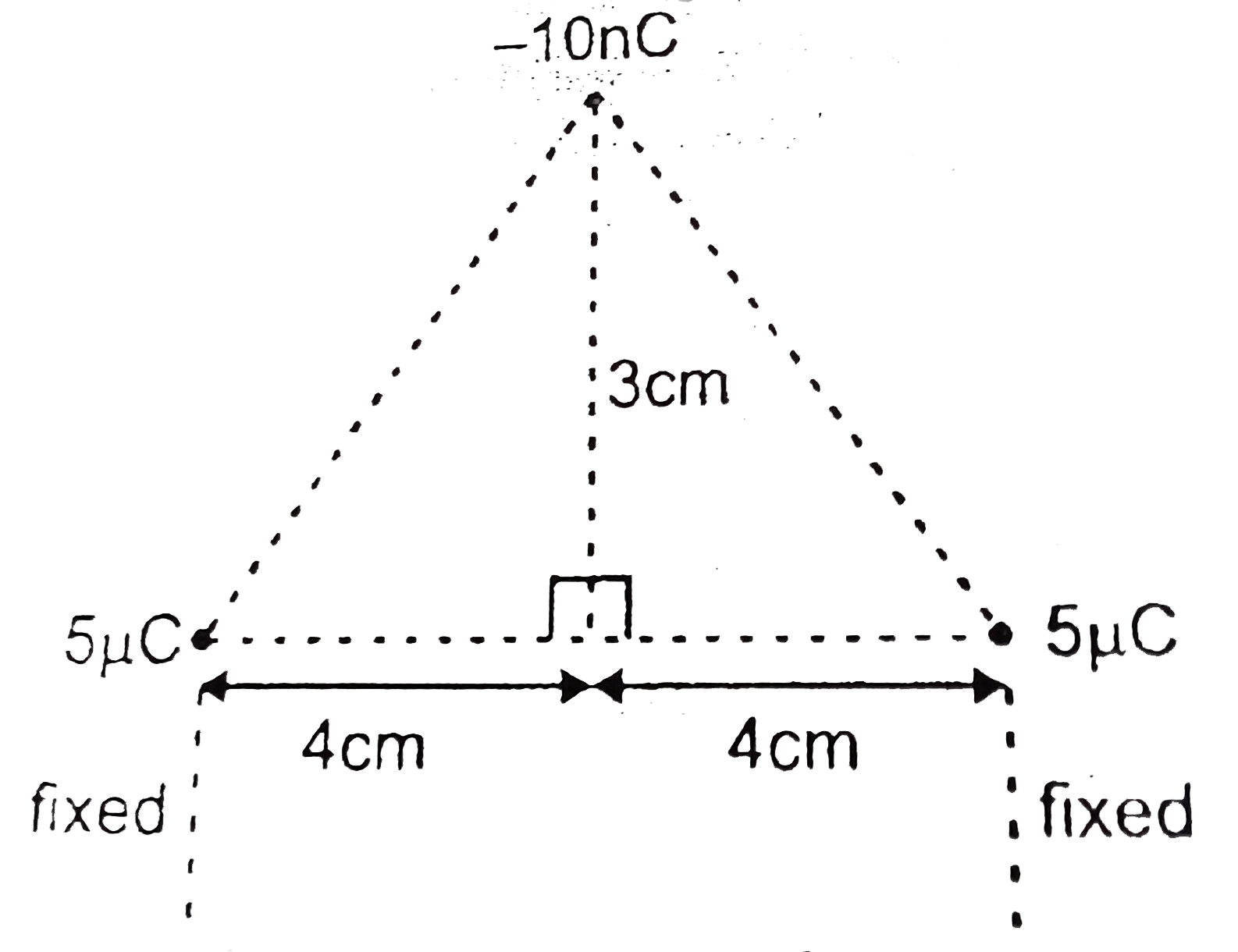
Figure shows two fixed positive point charges of magnitude 5μC A negative point charge of −10nC and mass 1kg is released as shown in figure (consider only electrostatic foces)
Initial acceleration fo −10nC charge is 0.216m/s2
initial acceleration of −10nC charge is 2.16m/s2
Kinetic energy of −10nC charge when it crosses the line joining two fixed charges is 4.5 mJ
Kinetic energy of −10nC charge when it crosses the line joining two fixed charges is 3 mJ.
The correct Answer is:A, C
a=2Kq1q2r2cos532m
=2×9×109×10×10−9×5×10−6(5×10−2)×135
=0.216m/s2
K.E.=2×9×109×5×10−6×10×10−9[14×10−2−15×10−2]
=2×9×5×10×109−6−9+2[5−420]
=2×9×5×1020×10−4=4.5mJ
Initial acceleration of −10nC charge is 0.216m/s2
Topper's Solved these Questions
- TEST PAPERSBook:RESONANCEChapter:TEST PAPERSExercise:PT-01
Explore 30 Videos
- TEST PAPERSBook:RESONANCEChapter:TEST PAPERSExercise:Pt-02
Explore 30 Videos
- TEST PAPERSBook:RESONANCEChapter:TEST PAPERSExercise:PART - II PHYSICS
Explore 107 Videos
- SIMPLE HARMONIC MOTION Book:RESONANCEChapter:SIMPLE HARMONIC MOTION Exercise:Advanced Level Problems
Explore 13 Videos
- TEST SERIESBook:RESONANCEChapter:TEST SERIESExercise:PHYSICS
Explore 127 Videos
Similar Questions
Two charges are placed s shown in figure below. The potential at point P is
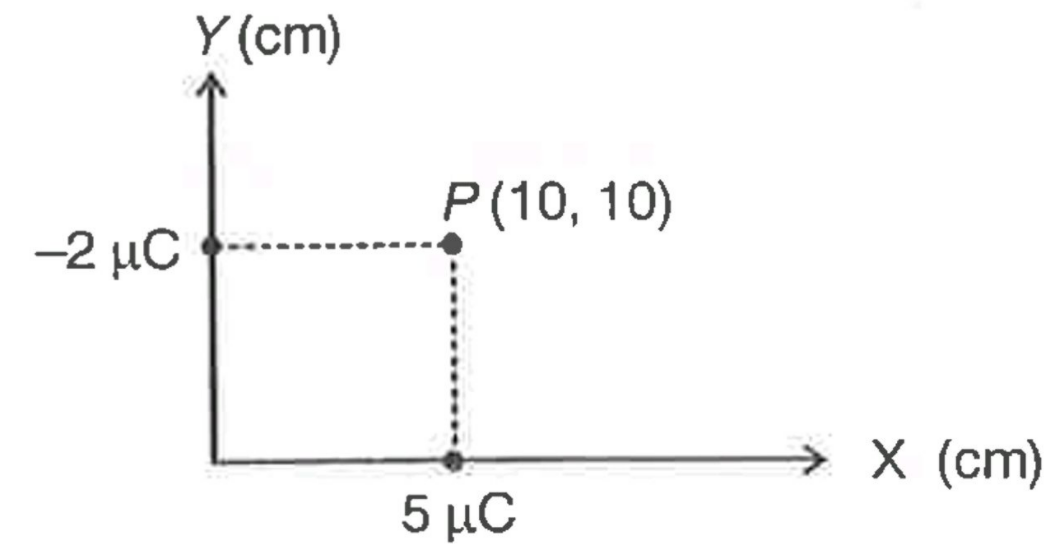
View SolutionA particle of mass 400mg and charged with 5×10−9C is moving directly towards a fixed positive point charge of magnitude 10−8C. When it is at a distance of 10 cm from the fixed positive point charge it has a velocity of 50 cm/s. At what distance from the fixed point charge will the particle come momentarily to rest ? Is the acceleration constant during the motion ?
View Solution
Knowledge Check
What is the potential energy of two equal negative point charges 2μC each held 1m apart in air ?
A0.018JB0.036JCzeroDNone of these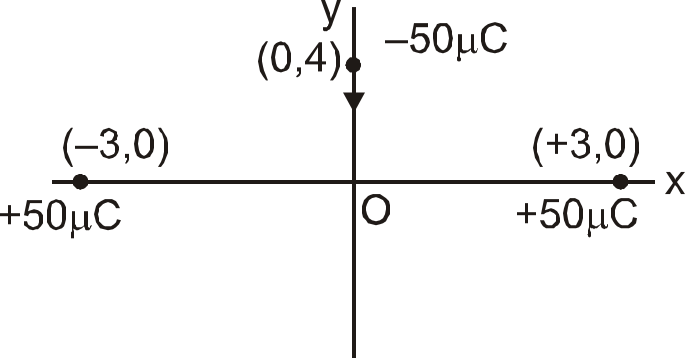
The figure shows two equal, positive charges, each of magnitude50μC, fixed at points (3, 0) m and (–3, 0)m respectively. A charge –50μC, moving along negative y–axis has a kinetic energy of 4J at the instant it crosses point (0,4)m. Determine the position of this charge where the direction of its motion reverses for the first time after crossing this point (neglect gravity).A(0m,−7√2)B(0,−6√2m)C(0,−5√2)D(0m,−4√2)Figure shows lines of force for a system of two point charges. The possible choice for the charge is
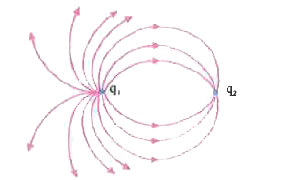 Aq1=4μC,q2=−1.0μCBq1=1μC,q2=−4μCCq1=−2μC,q2=+4μCDq1=3μC,q2=2μC
Aq1=4μC,q2=−1.0μCBq1=1μC,q2=−4μCCq1=−2μC,q2=+4μCDq1=3μC,q2=2μC
Two point charges Q are kept fixed on XY-plane at points A(0, d) and B(0, -d). Another point charge -q with mass m is held at a point, on the positive side of X-axis that is at the distance 2d from both the fixed point charges. What will be the magnitude of acceleration of the negative point charge (i) just after it is released from its location? (ii) at an instant it crosses the origin?
View SolutionA particle of mass 40 mg and carrying a charge 5×10−9C is moving directly towards a fixed positive point charge on magnitude 10−8C. When it is at a distance of 10 cm from the fixed positive point charge it has a velocity of 50cms−1 at what distance from the fixed point charge will the particle come momentarily to rest ? Is the acceleration constant during motion?
View SolutionA point charge of 5C is placed at point P (as shown in figure). A unit positive charge is taken from A to B along the circular path shown, then the net work done by electrostatic force is : [O is the centre of the circular path] [Where k=9×109Nm2/C2]
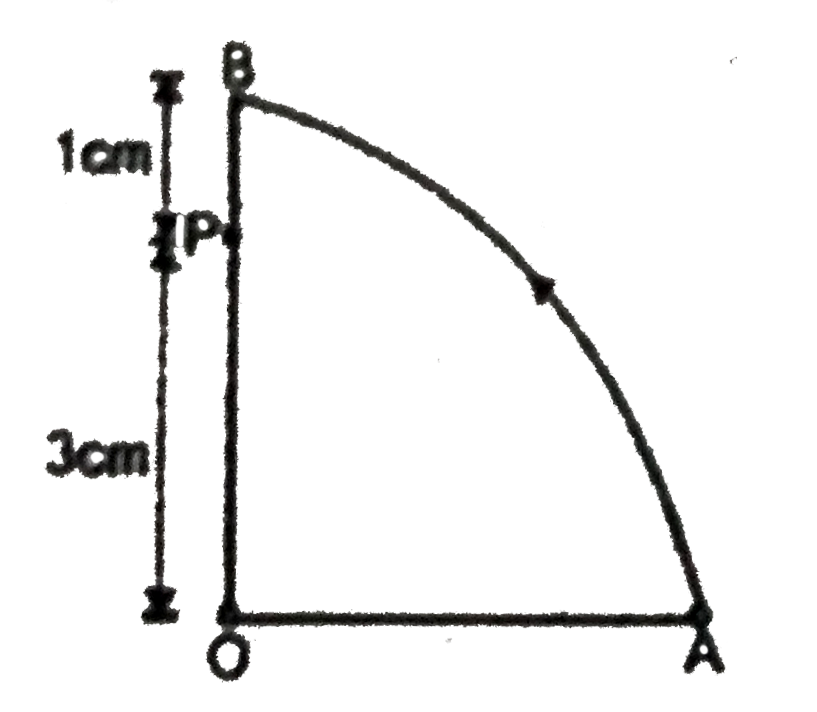
View SolutionFigure shows the electric field lines around three point charges A,B and C. Which of the following charges are positive?

View SolutionPotential energy of two equal negative point charges 2μC each held 1 m apart in air is
View Solution
